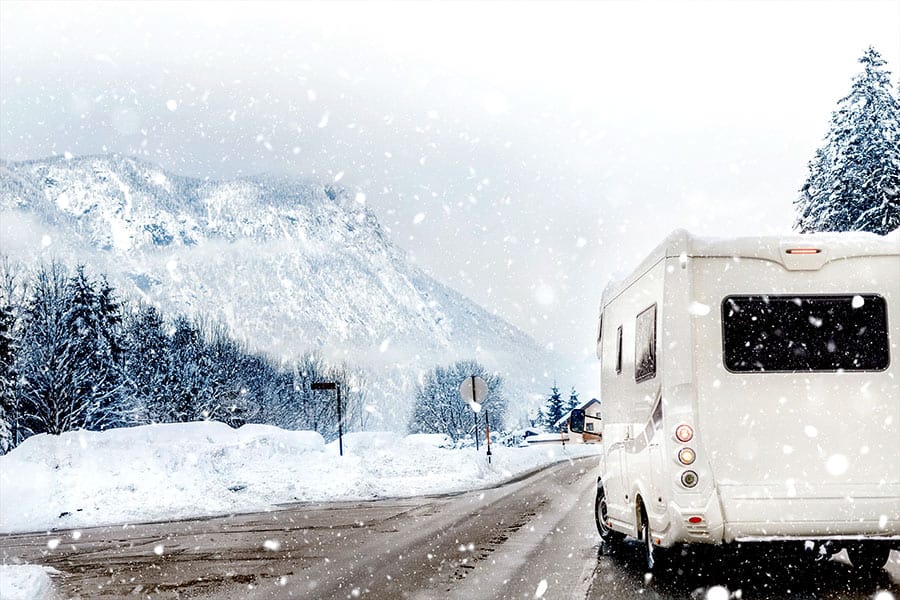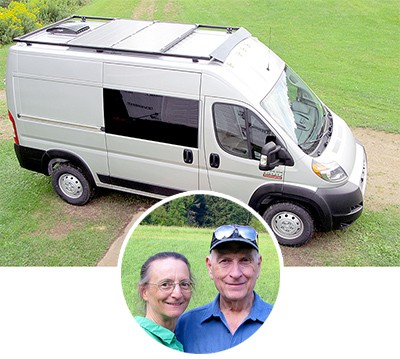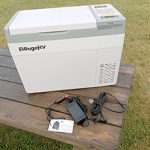
To get the most from an RV investment, many people use their motorhomes year-round, from summer road trips to the lake to a snow-covered adventure in the mountains. However, when using an RV in cold weather, specific steps are necessary to prevent the RV holding tanks from freezing. Frozen holding tanks can be quite problematic for any RV owner.
So, when should you turn on your RV tank heaters? You need to utilize the RV’s tank heaters when the outside temperature is approaching freezing and will remain at that temperature or lower for some time.
Knowing when to use your RV holding tank heaters will benefit you in the long run because it will help to prevent any future problems and unnecessary repairs bills. In this post, we will discuss what tank heaters are, when and why they should be turned on, and other essential tips.
What Is A RV Tank Heater?
A good comparison for your RV holding tank heater would be to think about how an electric blanket works. You turn the blanket on during chilly weather when you are cold and need heat. Then when the temperature rises, you turn it off once the heat is no longer needed.
The concept is basically the same for your RV holding tank heaters. During cold weather, when the tank needs heat, you switch on the tank heater to warm the tank and pipes, preventing the contents from freezing.
The thermostatically controlled heating pad should begin heating when the holding tank is approximately 40 degrees Fahrenheit and shuts off around 65 degrees Fahrenheit, plus or minus a few degrees.
When the ambient temperature warms up, or you drain the holding tanks, you turn the heaters off.
The Outside Temperature
You will need to turn on your RV tank heaters when the temperature outside is expected to drop to freezing and below. The temperature for freezing is 32 degrees Fahrenheit. So, you need to look at the forecast so you know when the temperature will be dropping that low, especially if you are using your RV where the temperatures routinely get near or below freezing.
If you are camping in an out-of-the-way location, there is a good chance that you may not have a cell signal to check the forecast. In that instance, you should have an accurate thermometer to have an exact knowledge of when the temperature will be approaching freezing and turn on the tank heaters.
There must be liquid in the holding tank when you turn on the heater. If you turn on your RV tank heater while there is no fluid present, the heater’s damage could be significant. The heater, the holding tank, and the pipes connected to the tank could become damaged.
If you are using your RV to camp during freezing temperatures, you will not have to worry about this because there will be liquid in the tank to heat. However, when your RV is parked, and the tanks are empty, do not use the tank heaters.
When you turn on your RV tank heaters because of freezing temperatures, you need to remember to turn it off when the temperatures rise. So, when your RV is in storage and not in use for the winter, you won’t need to have the heaters turned on because you should have the holding tanks empty.
Other Posts of Interest
- Ram ProMaster vs. Mercedes-Benz Sprinter: Which Is Right For You?
- Is Sheep Wool Insulation Safe?
- How To Keep Cool Sleeping In A Van: A Very Practical Guide
Will A Tank Heater Drain The Battery?
We all know how quickly a vehicle’s battery can drain, particularly when any extra electrical draw is applied to it or if the lights are left on accidentally. So you may be wondering how the battery of your RV will stand up to a tank heater.
Tank heaters do draw energy when they are in use, which means they could drain your battery. The amount of time before the battery becomes depleted depends on several factors, such as the battery size, condition, and the length of time the heaters are on.
Keeping the RV’s battery charged will ensure your holding tanks remain protected during freezing temperatures. You can get an idea of how long your battery will last by dividing the batteries Ah rating by the heaters amps. However, when connected to shore power, that should not be an issue.
How Many Amps Do RV Tank Heaters Draw?
Most RV tank heaters draw between 4.1 and 11.8 amps of power when turned on. The amount of amperage drawn by the tank heater is directly related to the size of the tank heater that is installed in your RV. They typically cover tanks sizes between 25-75 gallons.
Best RV Holding Tank Heaters
Now that you know the benefits of having a tank heater on your holding tank, you may be wondering what the best options to purchase are. Luckily there are several good options on the market in different sizes and price points. It’s incredibly easy to find the perfect tank heater for your RV.
Below are a couple of highly-rated RV tank heaters that you can purchase:
Facon:
- 8.0″ x 25″ RV Tank Heater Pad, up to 50 Gallons.
- 12″ x 18″ RV Tank Heater Pad, up to 50 Gallons.
UltraHeat:
- 12″ x 20″ RV Tank Heater Pad, 40 Gallon RV Tank Heater.
When searching for a holding tank heater, you want to make sure you are getting the proper size for your holding tank. If you improperly fit your holding tank with a heater, improper installation could cause unnecessary damage to occur to your holding tank, which can be rather costly.
Some of the tank heater choices come with one single pad, while others come with multiple pads. The heating pad you choose is entirely up to your needs.
Can I Install It Myself?
If you are considering using tank heaters in your RV, you may be curious to know if you can install the heater. As it turns out, tank heaters are relatively easy to install, and the wiring required is minimal as well as clearly labeled.
The fundamental steps are:
- Select the proper size heating pad; the installation instructions should be included when you buy the heating pad.
- Determine the tank’s best area to apply the pad, typically on the bottom by the pipes.
- Clean the tank area with soapy water to get rid of any dirt and dry with a clean rag. Then clean the area with alcohol and dry thoroughly.
- Apply the heating pad to the tank with the sticky side and press firmly; be careful not to stretch the pad.
- Make the necessary electrical connections.
The video below has instructions on heating pad installation.
Another positive thing about tank heaters is their ability to stay attached to the water tank. A strong adhesive on one side makes sure they stay where they belong on the tank. This is a great feature to ensure the durability of the product, but it also eliminates potential problems from the heat pad dislodging.
Final Thoughts
As you can see, a heater for your holding tank is essential if you are planning to use your RV in the cold months or a cold climate. Like a heater that you would have in your home, once the tank heater is on, you will likely want to leave it on for the duration of your cold-weather stay. This will allow your holding tanks to remain at a constant temperature and help eliminate cracks from frozen tanks and pipes.
However, because they have an electrical drain on the battery when in use, keeping the battery charged and the heaters functioning properly, is essential to prevent any freezing problems. With these safeguards in place, you will likely have an uneventful, cold weather camping adventure.






